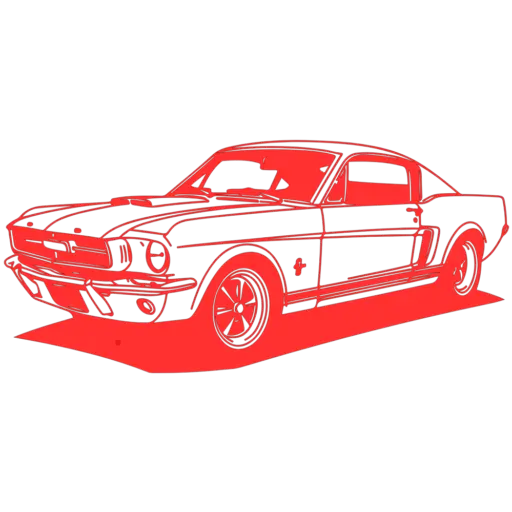Find out if the pre-made customization kits or custom projects are the best option to transform your classic car.
Is it worth going for the fast track or going for the exclusive?
There's nothing like seeing your classic car transformed, reflecting your style and personality.
But when it comes time to customize it, the big question arises: do I opt for a prefabricated kit or launch a custom project?
I've been through that dilemma before, and I can assure you it's not an easy decision.
In this article, I want to share my personal experience with you, including the successes and failures I experienced when trying both options.
If you're looking for the best way to customize your classic car, this review will save you time, money, and headaches.
Pre-made customization kits: fast, affordable, and practical
The first time I wanted to modify my old '68 Mustang, I did it with a pre-made kit I found online.
I chose it because:
- It was economical compared to a custom project.
- It came with all the necessary parts, from bumpers to interior details.
- It promised an “easy” and quick installation (according to the seller).
And in part, he succeeded. In less than three weeks, the car had a new look.
The problem is that several things also happened to me:
- The finish was… acceptable. Not horrible, but it was obviously a generic kit.
- Some components didn't fit together quite right.
- I was left with the feeling that the car was no longer "mine."
Of course, if you're on a tighter budget and looking for something functional and quick, a pre-made kit can be a good entry point into the world of customization.
personalization
Custom projects: when the car becomes an extension of you
A few years later, I decided to go all out. I bought a '64 Chevy Impala and took it to a specialized body shop for a completely bespoke customization project. And that was a different story.
From day one, the workshop designer sat down with me, listened to my ideas and preferences, and together we developed a plan. What I liked most was that:
- Every detail was designed to match my style: from the metallic paint to the steering wheel design.
- Premium materials were used that really make a difference.
- The car ended up being a work of art on wheels.
Of course, it also had its cons:
- The project took almost six months.
- The cost was at least three times higher than that of the prefabricated kit.
- There were unforeseen events that required budget adjustments.
But honestly, it was worth every penny. Today, that Impala not only turns heads at every stoplight, but it's become part of my identity.
Which option is best for you?
It depends on your priorities. Here's a quick comparison to help you:
| Feature | Prefabricated kits | Custom projects |
|---|---|---|
| Cost | Low | High |
| Execution time | Short | Long |
| Level of customization | Limited | Total |
| Quality of finish | Standard | Premium |
| Requires advice | Not necessarily | Yeah |
| Ideal for… | Beginners, tight budgets | Enthusiasts, collectors |
If you want to get started, try something different, and see quick results, the kit can be your best ally.
But if your dream is to have a car that no one else has the same, custom projects are the way to go.
Final tips before deciding
- Define your budget honestlyThere's nothing worse than giving up halfway through due to lack of funds.
- Choose workshops or suppliers with a good reputation. Check reviews, ask for examples of previous work.
- Be patientPersonalization is a process, not a race.
- Enjoy the journeyWatching your car's progress is a priceless experience.
Your car, your rules
Both options have their own magic. The important thing is that your car reflects who you are, and that's up to you.
Whether it's a kit or a custom design, the key is that you feel proud every time you see it in your garage.
If this analysis helped you clarify your ideas, share it with other enthusiasts and leave your opinion in the comments. Which one do you prefer?

He's been passionate about classic cars for as long as he can remember. His story began in his grandfather's garage, watching the painstaking restoration of a 1957 Chevrolet Bel Air. It was in that space, amid the smell of grease and the stories told, that he discovered his love for old four-wheelers.

